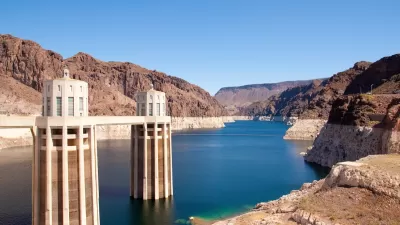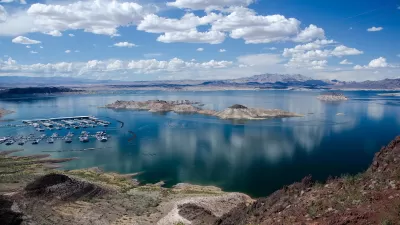According to one analyst, the agreement approved by the states doesn’t go nearly far enough to protect the river in the long term.

Writing in The Land Desk, Jonathan P. Thompson provides an analysis of the newly revealed Colorado River agreement, which, while historic, “won’t be enough to save the Colorado River if the climatic conditions of the last couple decades persist or worsen.”
Thompson provides a history of the Colorado River Compact, which divides up the river’s resources between Upper and Lower Basin states and, later, Mexico. But the allocations in the compact never matched real water supplies. With populations in the west growing rapidly, the water debt that has been embedded in river policy from the beginning is becoming too severe to be ignored.
Although details of the plan are still hazy, the known points are: “The Lower Basin states together will cut consumption by 3 million acre-feet over the 2023-2026 period, with at least 1.5 million acre-feet in cuts coming by the end of 2024,” and “Up to 2.3 million acre-feet of those cuts will be federally compensated by about $1.2 billion in Inflation Reduction Act funds.”
The problem, Thompson writes, is that the promised cuts are just half of the minimum amount required to support the river and its reservoirs, according to the federal government. And, as Thompson points out, the deal only covers the next few years. “What then?”
FULL STORY: The breakdown on the Colorado River ‘breakthrough’ water deal

Alabama: Trump Terminates Settlements for Black Communities Harmed By Raw Sewage
Trump deemed the landmark civil rights agreement “illegal DEI and environmental justice policy.”

Planetizen Federal Action Tracker
A weekly monitor of how Trump’s orders and actions are impacting planners and planning in America.

The 120 Year Old Tiny Home Villages That Sheltered San Francisco’s Earthquake Refugees
More than a century ago, San Francisco mobilized to house thousands of residents displaced by the 1906 earthquake. Could their strategy offer a model for the present?

In Both Crashes and Crime, Public Transportation is Far Safer than Driving
Contrary to popular assumptions, public transportation has far lower crash and crime rates than automobile travel. For safer communities, improve and encourage transit travel.

Report: Zoning Reforms Should Complement Nashville’s Ambitious Transit Plan
Without reform, restrictive zoning codes will limit the impact of the city’s planned transit expansion and could exclude some of the residents who depend on transit the most.

Judge Orders Release of Frozen IRA, IIJA Funding
The decision is a victory for environmental groups who charged that freezing funds for critical infrastructure and disaster response programs caused “real and irreparable harm” to communities.
Urban Design for Planners 1: Software Tools
This six-course series explores essential urban design concepts using open source software and equips planners with the tools they need to participate fully in the urban design process.
Planning for Universal Design
Learn the tools for implementing Universal Design in planning regulations.
Clanton & Associates, Inc.
Jessamine County Fiscal Court
Institute for Housing and Urban Development Studies (IHS)
City of Grandview
Harvard GSD Executive Education
Toledo-Lucas County Plan Commissions
Salt Lake City
NYU Wagner Graduate School of Public Service





























